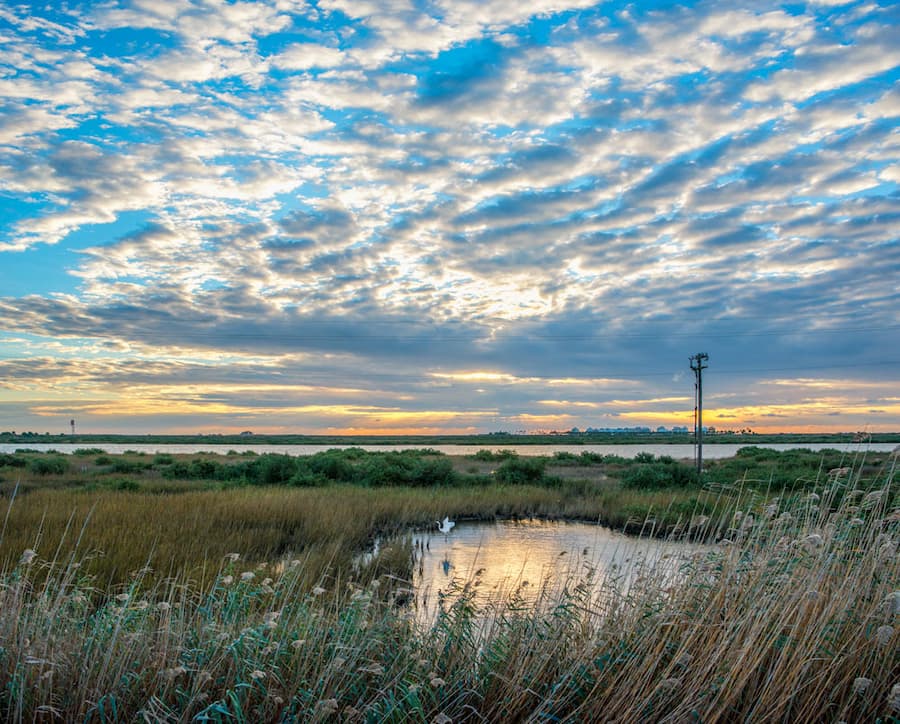Wetlands And Hurricane Resilience: Q&A With Dr. Anna Armitage
September 13, 2023
Tweet
By Taylor Bounds
The fall semester at Texas A&M University at Galveston coincides with the peak of hurricane season, so bldg. 311 sat down with marine biology professor Dr. Anna Armitage to talk about the importance of coastal wetlands both during and after a hurricane. Armitage is also the interim department head for the Department of Marine Biology at Texas A&M University at Galveston.
How do wetlands lower overall flood heights and provide a defense from storm surges?
Plants in wetlands can disperse wave energy, thus slowing down wave action and reducing the threat from a storm surge. The general rule of thumb is that 2.7 miles of wetlands can reduce storm surge by one foot. The actual attenuation rates vary widely, though, and are closely linked to storm characteristics (e.g., storm size, wind speed, direction of movement) and shoreline characteristics (e.g., steep vs. gradual shoreline). Regardless, wetlands have demonstrated many times over that they provide measurable and substantial protection to our communities and ecosystems.
How do wetlands help coastal communities recover from hurricanes?
In the most direct sense, wetlands help coastal communities by reducing the risk from storm surge impacts. After the storm, intact wetlands help economies recover by continuing many of their “normal” functions, such as providing nursery habitat for commercially and recreationally important fish and invertebrate species.
Is Texas experiencing a loss of wetlands habitat? Is Galveston?
Coastal wetland loss is widespread across the US and beyond. Rates of loss have slowed in recent years due to a range of federal protections and regulations, but Galveston County is still losing about 1% of its coastal wetlands each year. There are many drivers of this loss, but in our area, some important causes include natural and human-accelerated subsidence, sea level rise, and disturbances like hurricanes.
What organizations can I volunteer with to help conserve local wetlands?
I and other faculty at Texas A&M - Galveston partner with numerous local agencies including the Galveston Bay Foundation, Artist Boat and Houston Audubon. We work together to conduct research and education activities that help us understand and restore our coastal wetlands, and to educate and inspire residents to take action to protect these important habitats.
For more information about hurricane preparedness at Texas A&M University at Galveston, visit our website.
###
Media contact:More:
Read more about Health & Environment
Read more about TAMUG Research
Read more about Foundational Sciences
Read more about Marine Biology
Read more about Marine Sciences